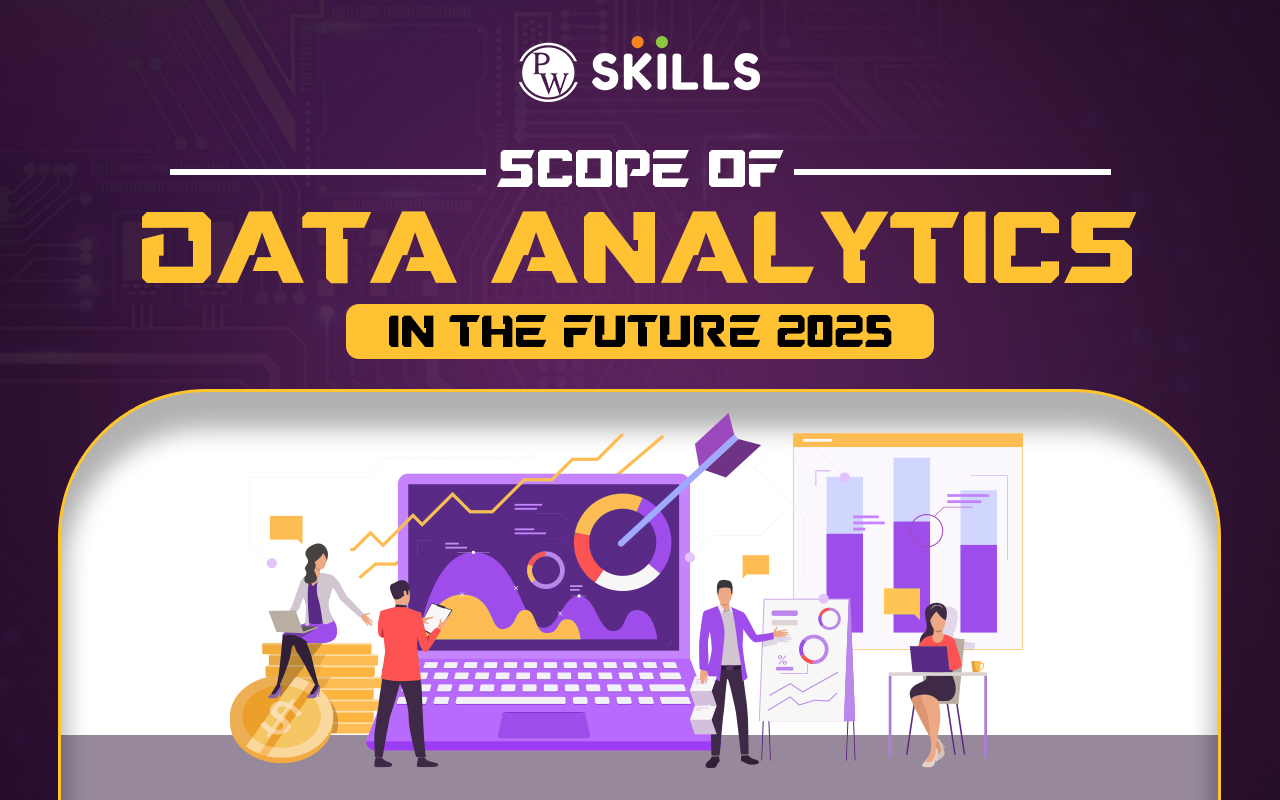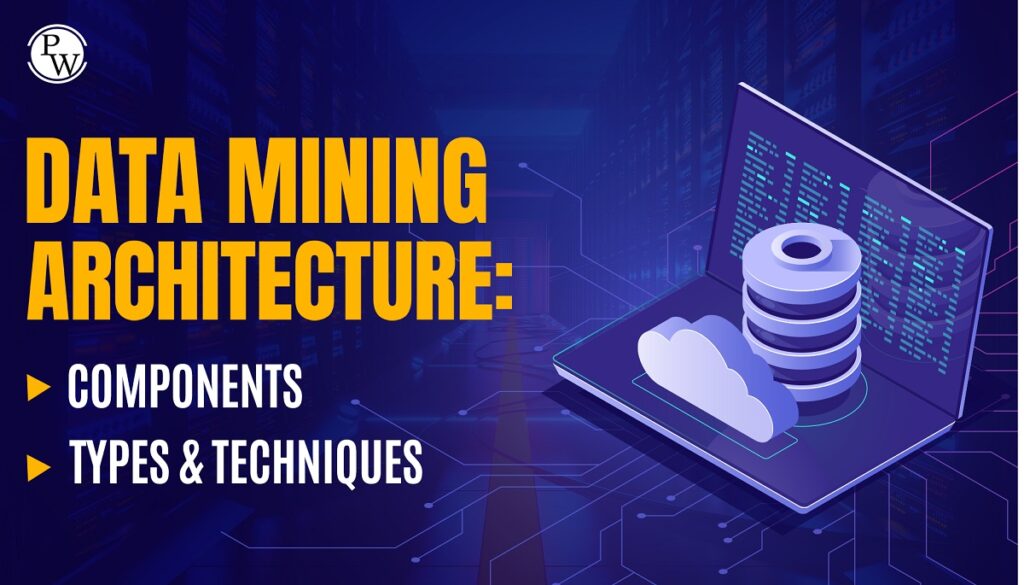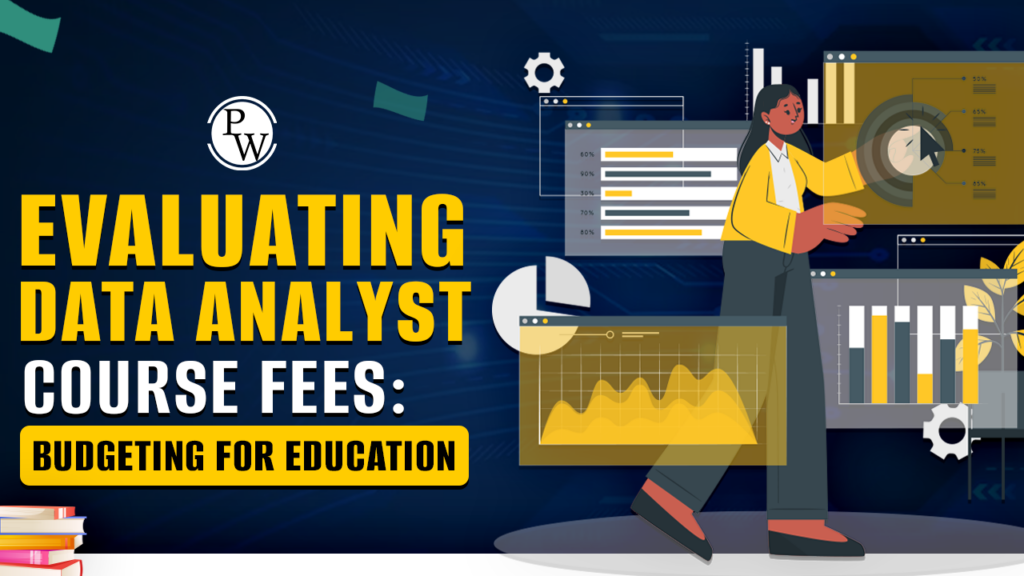Data Analytics Tools stands as a foundational practice for modern businesses. Finding the best data analytics tools can be daunting, given that only some tools universally fulfill every requirement. Learn about the top 10 data analytics tools for 2024 below!
Data Analytics Tools: In a rapidly changing world, it has never been more important to stay ahead of the curve when it comes to data analytics. Gathering meaningful data is critical for businesses looking to make informed decisions, and the need for data-driven insights keeps on growing.
As technology advances and new tools emerge every year, picking out which ones will become invaluable in 2024 can be tricky. To get you started down the right path, we have rounded up the top 10 data analytics tools worth considering if you want your business’ operations to remain at peak performance by 2024.
Hence, as we embark into 2024, it is highly recommended that you sign up for our comprehensive course, Mastering Full Stack Data Analytics by Physics Wallah, so you can gain practical experience in using data analytics tools effectively. We believe that this course will help enrich your knowledge base so that you stay ahead of technological developments in data analytics. So go ahead put your analytical skills to the test with this excellent training program!
Data Analytics Tools Overview
Data analytics tools are crucial in today’s business landscape, empowering organizations to extract meaningful insights from vast and complex datasets. These tools are instrumental in transforming raw data into actionable information, driving informed decision-making, and gaining a competitive edge. One category of data analytics tools includes programming languages like Python and R. Python, renowned for its readability and versatility, is widely utilized for tasks ranging from data scraping to analysis and reporting. Its extensive library ecosystem, including NumPy and pandas, supports various data manipulation tasks.
On the other hand, R specializes in statistical analysis and data mining, offering a robust platform for creating statistical/data analysis software with a vast repository of packages, such as CRAN.
The landscape of data analytics tools is diverse, catering to the multifaceted needs of businesses and data professionals. From programming languages and frameworks to specialized applications, these tools collectively empower organizations to harness the full potential of their data, fostering innovation and informed decision-making.
Also read: SQL For Data Analytics: A Comprehensive Guide
What Are Data Analytics Tools?
Data analysis tools encompass a spectrum of software programs, applications, and supportive resources that professionals leverage to scrutinize data sets comprehensively. These tools play a pivotal role in distilling the overarching patterns within information, offering actionable insights and predictions, and aiding decision-making processes.
Conceptually, they can be likened to an assemblage of maps, diagrams, and charts meticulously crafted to aggregate, interpret, and visually represent data across a myriad of applications. The significance of selecting the appropriate data analysis tool cannot be overstated, as it is instrumental in optimizing efforts and facilitating the achievement of professional objectives with greater ease.
How To Choose The Best Data Analytics Tools?
Choosing the best data analytics tools requires careful consideration of various factors to ensure they align with your organization’s needs. Here’s a comprehensive guide based on critical questions:
1) Understand Your Data Needs:
- Determine your business requirements from data analysis tools.
- Identify the specific problems you aim to solve through data analysis.
- Assess the current state of data storage and data quality in your organization.
- Evaluate your company’s approach to data quality and trustworthiness.
Note: Clean up data and establish effective data governance before implementing a new tool for optimal results.
2) Identify Users and Use Cases:
- Establish the diverse roles and departments that will use the data analysis tool.
- Form an inter-departmental analysis team representing various stakeholders.
- Gather examples of business questions each department aims to answer through data analysis.
- Ensure the tool can meet the specific needs of different teams.
3) Assess User Skills and Training Needs:
- Determine the skill levels required to use the data analysis tool effectively.
- Identify any gaps in skills within your team and plan for necessary training.
- Consider tools that are easy to use and promote data democracy, requiring minimal technical skills.
Tip: Choose tools that democratize data access, empowering non-technical team members.
4) Evaluate Data Visualization Capabilities:
- Assess the importance of data visualization for effective communication.
- Understand how the tool presents findings and if it aligns with your organization’s preferences.
- Prioritize tools that offer meaningful and customizable visualizations for KPIs and metrics.
Insight: Emphasize visualization to enhance confidence in presenting and making data-driven decisions.
5) Integration and Scalability:
- Evaluate how well the tool integrates with existing systems, databases, and data sources.
- Consider the scalability of the tool to accommodate growing data volumes.
- Ensure seamless integration for enhanced efficiency.
Consideration: Choose tools that align with your organization’s scalability requirements.
6) Cost and Value:
- Evaluate the total cost of ownership, including licensing, implementation, training, and support.
- Ensure the tool provides value for money and fits within your budget constraints.
- Consider long-term costs and benefits.
Tip: Look for tools that balance cost and features, providing a strong return on investment.
7) Customer Support and Updates:
- Assess the level of customer support provided by the tool vendor.
- Check for regular updates and a commitment to innovation.
- Ensure there are resources available for ongoing support and training.
Insight: Choose vendor tools with solid customer support and a commitment to staying current.
Also check: Essential Data Analytics Tools for Successful Analysis
Top Data Analytics Tools For Beginners
The table below provides a quick overview of top data analytics tools for beginners’ key features and the target audience they’re best suited for.
| Top Data Analytics Tools For Beginners | |||
| Tool Name | Description | Key Features | Best For |
| Microsoft Excel | Spreadsheet-based tool with an intuitive interface. | Basic data cleaning, analysis, and visualization. | Beginners learning basic data manipulation and analysis. |
| Google Sheets | Cloud-based alternative to Excel with collaboration features. | Basic data analysis and visualization, collaboration. | Beginners working on collaborative projects and simple analyses. |
| Tableau Public | Powerful data visualization tool with drag-and-drop functionality. | Interactive and shareable dashboards, free to use. | Beginners interested in exploring data visualization. |
| Power BI | Microsoft’s business analytics service for data visualization. | Visualization options, integrates with Excel, interactive reports. | Beginners looking for Microsoft-based analytics with a focus on visualization. |
| R Programming Language | Open-source programming language for statistical computing. | Statistical modeling, advanced analyses, extensive ecosystem. | Beginners interested in programming and statistical analysis. |
| Python with Pandas | Python is a versatile programming language; Pandas for data manipulation; Matplotlib/Seaborn for visualization. | Data manipulation, visualization, extensive community support. | Beginners looking for a powerful and widely used programming language. |
| IBM Watson Analytics | Cloud-based analytics tool with a user-friendly interface. | Guided data analysis, features for exploration and reporting. | Beginners seeking a guided analytics tool with cloud capabilities. |
| Jupyter Notebooks | Open-source web application for creating and sharing documents. | Interactive code, visualizations, narrative text, widely used in data science. | Beginners interested in interactive data analysis and documentation. |
| KNIME Analytics Platform | Open-source platform for data analytics, reporting, and integration. | Visual programming, drag-and-drop interface, modular analytics. | Beginners seeking a visual and modular analytics platform. |
| Qlik Sense | Associative data modeling for intuitive exploration. | Drag-and-drop interface, powerful visualization, data discovery. | Beginners interested in associative data modeling and interactive analytics. |
Also check: Choosing the Right Data Analytics Platform for Your Business
Best 10 Data Analytics Tools List
Here are the best data analytics tools list:
1) Python
- Type of Tool: Programming language.
- Availability: Open-source, and thousands of libraries that are free.
- Used for: Everything from data scraping to analysis and reporting.
Python, a versatile programming language, is indispensable for data analysts. Known for its readability, Python is widely used in the tech field. It is highly versatile, with a vast range of resource libraries suitable for various data analytics tasks. For instance, NumPy and pandas are excellent for computational tasks and general data manipulation. Libraries like Beautiful Soup and Scrapy facilitate web data scraping, while Matplotlib excels in data visualization and reporting. Python’s main drawback is its speed—it is memory-intensive and slower compared to some languages. Despite this, Python’s benefits far outweigh its drawbacks when building software from scratch.
2) R
- Type of Tool: Programming language.
- Availability: Open-source.
- It is mostly used for Statistical analysis and data mining.
R, another open-source programming language, is commonly used for statistical and data analysis software. While its syntax is more complex than Python, it excels in heavy statistical computing tasks and is famous for data visualization. R has a network of freely available code called CRAN, offering over 10,000 packages.
It combines well with other languages and systems, including significant data software, and supports C, C++, and FORTRAN code. However, it has challenges, such as poor memory management, and needs a dedicated support team. Nevertheless, the presence of the RStudio IDE enhances its usability.
3) Jupyter Notebook
- Type of Tool: Interactive authoring software.
- Availability: Open-source.
- It is mainly used for Sharing code, creating tutorials, and presenting work.
- Pros: Great for showcasing, language-independent.
- Cons: Not self-contained, nor great for collaboration.
Jupyter Notebook, an open-source web application, enables the creation of interactive documents incorporating live code, equations, visualizations, and narrative text. It supports over 40 languages, including Python and R, and is ideal for showcasing work. However, it has limitations in version control and collaboration. While unsuitable for development and analytics work, it remains valuable for presentations and tutorials.
4) Talend
ETL (Extract, Transform, Load) is a widely used data integration process, and Talend stands out as a comprehensive entry-level data analytics tool. Built on Java, this tool facilitates the collection and transformation of data through preparation, integration, and cloud pipeline design. Talend is adept at efficiently processing millions of data records, making it suitable for projects of any size. Its features include data preparation, big data integration, cloud pipeline design, and Stitch Data Loader, addressing diverse data management needs for organizations of all scales.
5) Apache Spark
- Type of Tool: Data processing framework.
- Availability: Open-source.
- Mainly Used for Big data processing and machine learning.
Apache Spark is a data processing framework facilitating the quick processing of vast datasets. Developed in 2012 and donated to the Apache Software Foundation, Spark is known for its speed, distributing computationally heavy analytics tasks across multiple computers. It is around 100x faster than Hadoop, primarily due to its use of RAM. Spark is often employed in developing data-intensive machine learning models and features MLlib, a library of machine learning algorithms. However, it is computationally expensive and lacks a file management system, often requiring integration with other software like Hadoop.
6) NodeXL
Known as the “MSPaint of Networks,” NodeXL comes in two versions: NodeXL Basic and NodeXL Pro. The Basic version, being free and open-source, allows data scientists to visualize and examine network graphs within Microsoft Excel. On the other hand, the Pro version extends its capabilities to encompass social media network data and includes AI-powered text and sentiment analysis features. NodeXL is an excellent choice for tasks such as data representation, import, analysis, and visualization.
7) Looker
Looker, a cloud-based solution, presents an intuitive and user-friendly drag-and-drop interface. It encompasses data analytics, management, business intelligence, and advanced visualization features. The tool adopts a multi-cloud strategy, accommodating various data sources and deployment methods. Looker seamlessly integrates with diverse databases, including Snowflake and Amazon Redshift. It includes a built-in code editor enabling data analysts to modify generated models.
8) KNIME
An open-source data analysis tool, KNIME empowers users to harness powerful scripting languages like R and Python for building data science applications. Offering in-memory processing and multithreaded data processing, KNIME boasts a user-friendly drag-and-drop GUI that is both straightforward for beginners and provides a robust platform for visual programming, facilitating efficient data analysis and modeling.
9) Lexalytics
Ideal for businesses seeking to understand customer or employee experiences through text data, the Lexalytics Intelligence Platform extracts insights from posts, tweets, and comments. Utilizing text analytics, machine learning, and natural language processing, Lexalytics identifies attitudes and sentiments. This software is deployable in public, private, and hybrid cloud environments, offering comprehensive insights for professionals.
10) SAS Forecasting
SAS Forecasting for Desktop is essential for data analysts working on business solutions, providing a range of forecasting methods, including “what-if” analysis, event modeling, scenario planning, and hierarchical reconciliation. This robust data analysis tool offers scalability, modeling capabilities, an easy-to-use GUI, data preparation features, and an event-modeling console, empowering users to anticipate and plan for future events effectively.
Best Tools for Data Analysis in Research
Here are some of the best tools for data analysis in research:
| Best Tools for Data Analysis in Research | |||
| Tool Name | Description | Key Features | Best For |
| R Programming Language | Open-source programming language for statistical computing. | Statistical modeling, advanced analyses, extensive ecosystem. | Researchers requiring statistical analysis and programming capabilities. |
| Python with Pandas | Python is a versatile programming language; Pandas for data manipulation; Matplotlib/Seaborn for visualization. | Data manipulation, visualization, extensive community support. | Researchers looking for a flexible programming language with data analysis capabilities. |
| SPSS (Statistical Package for the Social Sciences) | Statistical software for social science research. | Data analysis, statistical modeling, user-friendly interface. | Social science researchers and users seeking an intuitive statistical tool. |
| SAS (Statistical Analysis System) | Analytics and statistical software suite. | Advanced analytics, statistical modeling, data management. | Researchers in various domains requiring a comprehensive analytics suite. |
| STATA | Software for data management and statistical analysis. | Data manipulation, statistical analysis, customizable graphics. | Researchers in economics, sociology, political science, and other disciplines. |
| MATLAB | High-level programming language and environment for numerical computing. | Mathematical modeling, simulation, data analysis, and visualization. | Researchers in engineering, physics, and other quantitative disciplines. |
| IBM SPSS Statistics | Statistical software for data analysis. | Data analysis, statistical modeling, predictive analytics. | Researchers and analysts looking for a robust tool for statistical analysis. |
| NVivo | Qualitative data analysis software. | Text analysis, coding, visualization of qualitative data. | Researchers conducting qualitative research, such as in social sciences. |
| MAXQDA | Qualitative and mixed methods research software. | Text analysis, coding, multimedia data integration. | Researchers conducting mixed methods research with a focus on qualitative analysis. |
| Atlas.ti | Qualitative data analysis and research software. | Text analysis, coding, visualization, collaboration features. | Researchers in various disciplines conducting qualitative and mixed methods research. |
Mastering Full Stack Data Analysis by Physics Wallah is a great way to get started. It covers all the essentials and helps its students stay ahead of the curve. The modern world has become increasingly reliant on data analysis for decision making, with or without our knowledge.
This makes it even more important to take ownership of our learning so as to stay competitive and informed when using these tools. Doing so requires understanding data analytics and being creative about how we use its resources to make comprehensive decisions.
Also read: Data Collection in Data Analytics 2023: Types, Tools, Steps
Benefits of Using Data Analytics Tools
Here are the benefits of using data analytics tools:
- Informed Decision-Making: Data analytics tools provide insights and patterns, enabling organizations to make informed and strategic decisions based on evidence rather than intuition.
- Personalized Customer Experience: Analytics enables customizing customer experiences tailoring products or services to individual preferences.
- Operational Efficiency: Organizations can identify inefficiencies, streamline processes, and optimize resource allocation by analyzing operational data, improving overall efficiency.
- Enhanced Security: Data analytics contributes to improved security measures, safeguarding sensitive information.
- Storytelling Through Data: Analytics tools help translate complex data into vivid stories, facilitating effective communication.
- Business Intelligence Sharing: Facilitates business intelligence sharing across the organization for better collaboration.
- Proactive Anticipation of Needs: Data analytics enables businesses to anticipate customer needs and market trends proactively.
- Competitive Advantage: Leveraging data analytics gives businesses a competitive edge by identifying market trends, understanding customer behaviors, and anticipating industry shifts.
- Predictive Analysis: Data analytics tools use predictive modeling to forecast future trends and outcomes, allowing organizations to proactively plan and adapt to changing market conditions.
- Risk Management: Data analytics helps organizations identify and mitigate potential risks by analyzing historical data patterns and providing insights into future challenges.
- Strategic Planning: Organizations can develop and refine long-term strategies by analyzing historical performance, market trends, and other relevant data points.
- Real-Time Insights: Many data analytics tools offer real-time analysis, allowing organizations to respond promptly to changing situations, emerging opportunities, and potential issues.
- Innovation and Product Development: Data analytics fosters innovation by identifying gaps in the market, understanding customer needs, and providing insights for developing new products or services.
- Efficient Marketing Campaigns: Analyzing customer behavior and preferences helps optimize marketing strategies, allowing organizations to target the right audience with personalized and effective campaigns.
- Employee Productivity: By analyzing workforce data, organizations can identify factors influencing employee productivity, make informed decisions on training and development, and enhance overall team performance.
FAQs
How important is data quality and governance when implementing a data analytics tool?
Data quality and governance are critical considerations. Poor-quality data can lead to inaccurate insights, impacting decision-making. Implementing effective data governance ensures data integrity, security, and compliance, contributing to the success of data analytics initiatives.
What skills are needed to use data analytics tools effectively?
The skills required depend on the complexity of the tool. While some tools may demand advanced skills like SQL and programming, others prioritize user-friendliness for broader accessibility. Training and support may be necessary to fill skill gaps within your team.
Are data visualization features crucial in a data analytics tool?
Yes, data visualization is essential. Clear and meaningful data visualization helps users easily understand trends, patterns, and insights. It enhances communication within the organization and facilitates better decision-making.
Can data analytics tools be used by non-technical team members?
Many modern data analytics tools are designed to be user-friendly, promoting data democratization. This means that even non-technical team members can access and use these tools, reducing dependencies on technical experts for data-related queries.
How do data analytics tools contribute to business growth?
Data analytics tools contribute to business growth by providing insights that enable organizations to optimize processes, identify new opportunities, enhance customer experiences, and make strategic decisions based on data-driven evidence.




